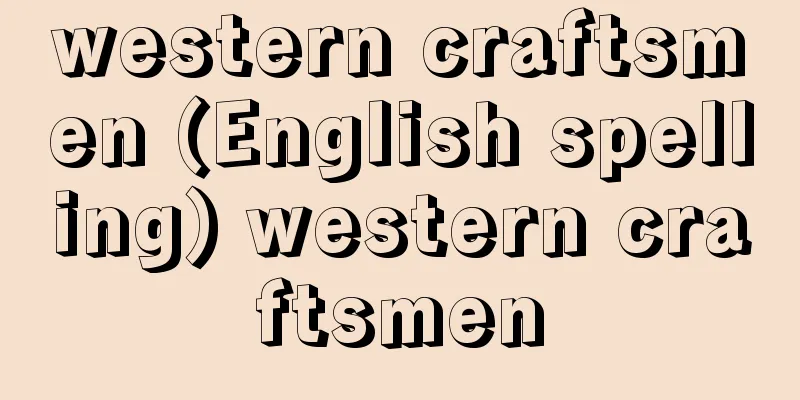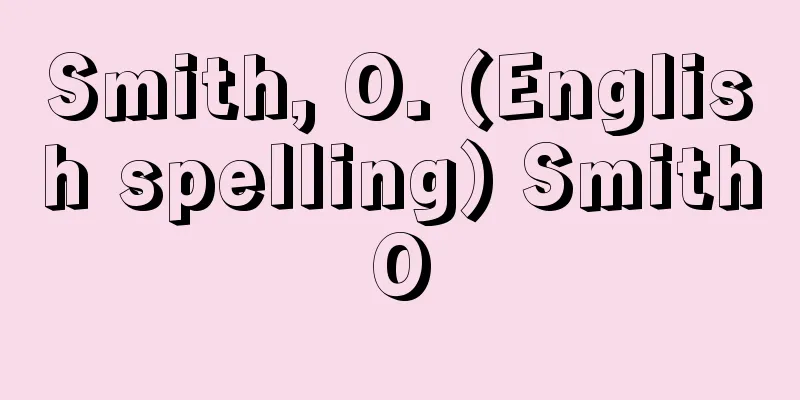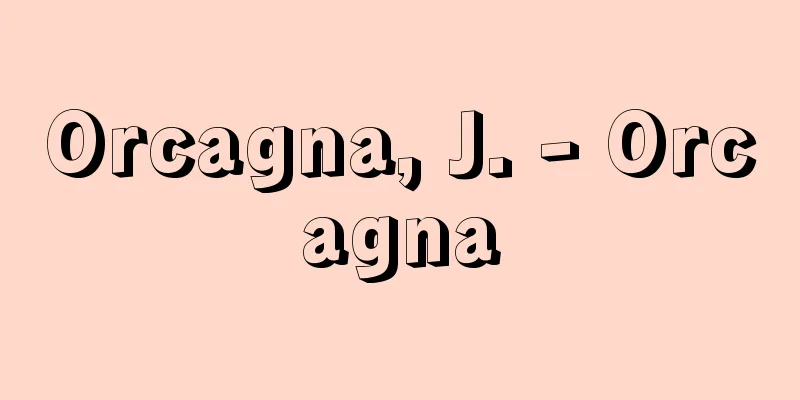Portrait - shozo (English spelling) portrait English

|
A portrait, portrait sculpture, or portrait photograph is a work that depicts a specific individual. It can be a full-body portrait, a head portrait, or a group portrait, such as the 17th-century Dutch "composite portrait," or a portrait of two or three people, such as sisters or a husband and wife. [Kimio Nakayama] WesternHistorically, the depiction of specific individuals began with the statues of Gudea in Sumer and the statues of kings and chieftains in the Old Kingdom of Egypt. However, in these cases, the artist or client was interested in both the expression of the divinity or authority of the kings and chieftains and the expression of the "individual," and the statues also had religious meanings, so it must be said that they are quite different from modern portraits. In Greek sculpture, at least until the Early Classical period, "universality" was probably emphasized over "individuality," even in statues of Olympic victors. However, from the Late Classical to the Hellenistic period, individual worship gradually became more common, and many statues of Socrates with ugly faces were produced. In the Roman period, interest in such secular individuals increased with the generalization of emperor worship, and many portrait sculptures were produced, mostly busts of the head only, or in the case of emperors, often full-body figures, which became an important part of Roman sculpture. Portraits of poets and baker couples also appear in wall paintings. Also in Roman Egypt, the so-called mummy portraits emerged from a mixture of Greek and Roman techniques and Egyptian funerary rituals. In the Middle Ages, as in the Greek era, the "individual" was extremely small in the eyes of God, and realistic techniques were abandoned. However, in the later period, with the development of civil society, awareness of the "individual" was reborn, and with the further development of realistic aspects, portraits were reborn. These began with the addition of images of donors who dedicated churches to part of the murals. One of the oldest surviving examples is Giotto's murals in the Scrovegni Chapel in Padua (c. 1305), in which the donor Enrico Scrovegni dedicates the church. Later, donors were added to the altarpieces along with patron saints and others. While the possibility of developing into independent portraits was thus established, secular rulers were also included in paintings from around the beginning of the 14th century. This is the full-length equestrian statue by Guidoriccio da Fogliano, painted by Simone Martini on the wall of the Palazzo Publico in Siena, which paved the way for the sculptural equestrian statues of warriors that produced many masterpieces during the Renaissance. Thus, from the second half of the 14th century to the 15th century, a large number of independent portraits and portrait sculptures were produced in various places. One of the first examples of independent portraits is the profile portrait of "King Jean the Good" (c. 1360) at the Louvre. Portrait sculptures were also added to funerary sculptures. The collections of portraits reportedly owned by the Dukes of Berry and Orléans show that the "individuality" had already begun to take on a very large importance in the late Gothic period. In the 15th century, from 1420 to 1460, portraiture reached its heyday in both Flanders and Italy. In Italy, portraits were mainly drawn with sharp contours of the profile, clearly showing the self-awareness and establishment of the "individuality" of the Renaissance. In Flanders, portraits were painted three-quarter-view, and efforts were made to portray the appearance of secular people more realistically, including their psychological state. This type was eventually introduced to Italy. In terms of depicting secularity, indoor portraits such as Jan van Eyck's "The Arnolfini Couple" (National Gallery, London) and Massys' "The Money Changer's Wife" (Louvre Museum) were also painted in Flanders. The development of portraiture in the 15th century came from a variety of perspectives: courtly, heroic, secular, and aesthetic, culminating in the perfection of the classical portrait, such as Leonardo da Vinci's Mona Lisa and Raphael's Balthazar Castiglione (both in the Louvre). Since then, portraits have become one of the most important genres of painting and sculpture, alongside mythological and biblical paintings, and continue to this day. Therefore, portraits constitute the way people exist in society and in their times, and the history of the view of humanity. For example, when comparing the dignified portraits of kings and cardinals in 17th century France with the 18th century portrait of Voltaire by Coysbox, made in his later years, we can clearly see the difference in the view of humanity, or the difference in aesthetics, between the two eras. [Kimio Nakayama] OrientalIn the East, there are relatively many relics of sculpture in West Asia and India. Reliefs of Achaemenid kings, such as Darius the Great in Persepolis, and a life-size stone statue of King Kanishka from the Kushan dynasty in Central Asia are preserved in the Kabul National Museum in Afghanistan and the Mathura Museum in India. Both are sadly missing their heads, but are noteworthy as relics of specific individuals, and emperors at that. This is thought to be due to the influence of depictions of emperor statues in ancient Persia. The statue of King Kanishka at the Kabul National Museum was destroyed by the Taliban regime in 2001 and no longer retains its original form. In contrast, in East Asia, particularly China, portraits are predominantly painted works. According to the history of Chinese painting, from ancient times rulers would draw illustrations of sages and saints and display them on their person. When this tradition of portraiture continued into the Tang dynasty and trends towards humanism and realism became more prevalent, master portrait painters appeared and became models for later generations. The "Scroll of Emperors," said to have been painted by Yan Libpen and currently housed at the Boston Museum of Fine Arts, is a representative example of this. [Shinichi Nagai] JapanIn Japan, the creation of portraits in ancient times was influenced by this trend of the Tang dynasty. The "Portrait of Prince Shotoku," originally handed down to Horyu-ji Temple and later made an Imperial Treasure, has been called a "Chinese-style portrait" since ancient times, and is an excellent piece that continues the tradition of Tang dynasty portraiture. Then, with the rise of Buddhism and the active import of Tang culture, many portraits of high priests were brought to Japan. It is said that the "Portrait of the Five Shingon Patriarchs" at Toji Temple in Kyoto was brought over by Kukai, who had over ten masters, including Li Zhen, paint them there. There are also excellent sculptures, and the statue of Ganjin at Toshodaiji Temple in Nara and the statue of Gyōshin at Horyu-ji Temple are both masterpieces created using new techniques for Tang dynasty portraiture. In the Heian period, portraits of Buddhist monks were the mainstream, but with the rise of Yamato-e, a style of painting called nise-e, which depicted facial features in a particularly realistic way, emerged in this field, and unique portrayals of emperors, nobles, samurai, etc., such as the "Portrait of Minamoto no Yoritomo" from the Kamakura period, began to be produced. Furthermore, with the arrival of Zen Buddhism, a specific style of portrait depicting a high-ranking monk from the Zen temple, known as a chinzo, became popular, and sculptures were also produced to be worshipped as patriarchs. Building on this tradition of Japanese portraiture, a series of images by the Edo period painter Watanabe Kazan, including "Portrait of Takami Senseki" and "Portrait of Ichikawa Beian," played a major role in building a bridge to modern portraiture. [Shinichi Nagai] "Japanese Art 33: Portraits" by Tsuguo Miya (1975, Shogakukan) [Reference] |Neo-Sumerian (around 2090 BC) Diorite, 44cm tall, Iraq, probably excavated in Girsu, owned by the Metropolitan Museum of Art Gudea Statue New Kingdom period (1479-1458 BC) Limestone, painted Height: 126.5cm Deir el-Bahari Metropolitan Museum of Art, Thebes, Egypt Hatshepsut 138-161, marble, 40.2 cm, owned by the Metropolitan Museum of Art Antoninus Pius 1536 Oil painting (Collection of the Metropolitan Museum of Art ) Jean Clouet: Portrait of Guillaume Budet 1655 Oil on canvas, Metropolitan Museum of Art Champagne "Jean-Baptiste... "Portrait of Minamoto no Yoritomo" (traditional) Copy (partial) owned by the Historiographical Institute, University of Tokyo © Historiographical Institute, University of Tokyo "> Minamoto no Yoritomo "Portrait of Emperor Goyozei" (detailed copy in possession of the Historiographical Institute, University of Tokyo) © Historiographical Institute, University of Tokyo "> Emperor Goyozei Source: Shogakukan Encyclopedia Nipponica About Encyclopedia Nipponica Information | Legend |
|
肖像画、肖像彫刻、肖像写真など、ある特定の個人をモデルとする作品。全身像から頭部像まで、各種の表現法がある。また17世紀のオランダにおける「組合せ肖像画」のように集団で描かれたもの、あるいは姉妹や夫妻など2、3名で描かれる場合もある。 [中山公男] 西洋歴史的には、シュメールの「グデア」の彫像群や、エジプト古王国時代の王や首長たちの像から、すでに特定の個人の表現は始まっている。しかし、この場合、王や首長たちの備える神格なり権威の表現と「個」の表現とがともに制作者や注文主の関心事であり、また同時に宗教的な意味をもつ像であるため、近代の肖像とかなり異なるといわなければならない。ギリシア彫刻においても、少なくとも古典前期までは、オリンピックの勝利者の像においてすら、おそらく「個」より「普遍性」が重視されたと考えられる。しかし古典後期からヘレニスティック期には、しだいに個人崇拝が一般化し、たとえば醜い顔のソクラテスなどの彫像も多く制作される。ローマ時代になると、こうした世俗的な個人への関心は、皇帝崇拝の一般化とともに高まり、数多くの肖像彫刻がほとんど頭部だけの胸像や、あるいは皇帝の場合にはしばしば全身像で制作され、ローマ彫刻における重要な部分を占めるようになる。壁画にも、詩人やあるいはパン屋の夫妻などの肖像画が登場する。またやはりローマ時代のエジプトでは、ギリシア・ローマ風の技法とエジプトの埋葬の儀礼との混合から、いわゆるミイラ肖像画が生まれた。 中世もギリシア時代と同様、神の前で「個」がきわめて小さく、しかも写実的技法を放棄したが、後期における市民社会の発達による「個」の自覚の再生、さらに写実的な点の発達に伴って、肖像が再生する。それらは、教会を奉献した寄進者の像を壁画の一部に描き加えることから始まった。最古の遺例の一つに、パドバのスクロベーニ礼拝堂のジョットの壁画(1305ころ)があり、ここでは寄進者エンリコ・スクロベーニが教会を捧(ささ)げている。ついで寄進者像を守護聖者などとともに祭壇画の一部分に描き加えることがなされる。独立した肖像画への発展の可能性がこうしてできあがる一方、やはり14世紀初めころから、世俗的な支配者を画中にすることも行われた。シエナのパラッツォ・プブリコの壁画中のシモーネ・マルティーニの筆になるグイドリッチョ・ダ・フォリアーノの全身騎馬像がそれであり、ルネサンス期に多くの名作を生んだ彫刻による武人たちの騎馬像への道がここに開かれている。こうして、14世紀後半から15世紀にかけて、独立した肖像画、肖像彫刻が各地で数多く制作された。ルーブル美術館の「ジャン善良王」(1360ころ)の横顔肖像などが、独立した肖像の最初の例の一つである。そしてまた、墓碑彫刻に肖像彫刻が付加することがなされる。ベリー公やオルレアン公が所蔵していたと伝えられる肖像画の収集は、ゴシック後期に「個」がすでにきわめて大きな比重をもち始めたことを示している。 15世紀、1420~60年ころ、フランドルにおいてもイタリアにおいても、肖像は全盛期に入る。イタリアでは主としてプロフィールが鋭い輪郭線で描かれ、ルネサンス期における個人の自覚、「個」の確立を端的に示している。フランドルでは、四分三斜め向きの肖像が描かれ、より写実的に世俗人の風貌(ふうぼう)を、その心理性をも含めて描く努力がなされた。このタイプはやがてイタリアにも導入された。世俗性を描くという観点では、フランドルにおいて、ヤン・ファン・アイクの『アルノルフィニ夫妻』(ロンドン、ナショナル・ギャラリー)、マサイスの『両替商の妻』(ルーブル美術館)のような室内での肖像も描かれている。 15世紀における肖像画の発達は、宮廷的、英雄的、世俗的、あるいは美的な、さまざまな観点でみられ、レオナルド・ダ・ビンチの『モナ・リザ』やラファエッロの『バルタザール・カスティリオーネ』(ともにルーブル美術館)など、古典的な肖像の完成へと至っている。 その後、肖像画は、神話画、聖書画と並んで絵画、彫刻のもっとも主要なジャンルとして今日に至っている。したがって、肖像は、その時代、社会における人間の在り方、人間観の歴史を構成する。たとえば、17世紀フランスにおける王や枢機卿(すうききょう)たちの威厳に満ちた肖像画と、18世紀のコワズボクスによる晩年の『ボルテール』像とを比較したとき、二つの時代における人間観の差、あるいは美学の差をはっきりとみいだすことができる。 [中山公男] 東洋東洋では西アジア、インドにおいて彫刻の遺品が比較的多くみられる。ペルセポリスのダリウス大王をはじめとするアケメネス朝の王の浮彫り像、また中央アジアではクシャン王朝のカニシカ王像と称する等身大の石像がアフガニスタンのカブール国立博物館およびインドのマトゥラ博物館に伝存する。いずれも惜しいことに頭部を欠失しているが、特定の人物、しかも帝王像の遺品として注目される。これは古代ペルシアにおける帝王像の表現の影響によるものと思われる。なお、カブール国立博物館のカニシカ王像は、2001年タリバン政権により破壊され原形をとどめていない。 これに反し、中国を中心にする東アジアでは、肖像は絵画の作品が主流を占める。中国の画史によると、かなり古いころから賢聖を図示し身辺に掲げることが為政者によって行われた。その肖像の伝統が唐代に入り、人間主義、写実主義の傾向が盛んになると、肖像画の名手が現れ、後世その範とされるようになった。現在アメリカ、ボストン美術館に所蔵される閻立本(えんりっぽん)筆と伝える『帝王図巻』はその代表的な遺品である。 [永井信一] 日本日本では、古代における肖像の制作は、この唐の風潮を受けて行われた。もと法隆寺に伝来、のちに御物(ぎょぶつ)となった『聖徳太子画像』は古来「唐本御影」といわれるように、唐代肖像画の伝統を引き継ぐ優品である。ついで、仏教の隆盛、唐文化の積極的移入は高僧画像を多くわが国にもたらした。京都・東寺の『真言五祖像』は空海が彼の地で李真(りしん)ら10余人の名手に描かせ請来したものといわれる。彫像にも優れた作があり、奈良・唐招提寺(とうしょうだいじ)の鑑真(がんじん)像、法隆寺の行信像はいずれも唐代肖像の新技法をもってつくられた名品といえる。 平安時代の肖像は仏教の高僧像が主流をなしたが、大和絵(やまとえ)がおこると、この分野に似絵(にせえ)という顔貌(がんぼう)をとくに写実的に描く画様が現れ、鎌倉時代の『源頼朝(よりとも)像』をはじめ、天皇、貴紳、武家など個性的な描出が行われるようになった。さらに、禅宗の渡来とともに、頂相(ちんぞう)と称する禅林高僧を図示した特定の形式の肖像画が盛行し、彫像にも祖師として礼拝の対象にするものが制作された。 こうした日本の肖像の伝統を踏まえ、近代的な肖像への橋渡しとして大きな役割を果たしたのが江戸時代の渡辺崋山(かざん)の筆になる『鷹見泉石(たかみせんせき)像』『市河米庵(べいあん)像』をはじめとする一連の画像である。 [永井信一] 『宮次男著『日本の美術33 肖像画』(1975・小学館)』 [参照項目] |新シュメール期(紀元前2090年ころ) 閃緑岩 高さ44cm イラク おそらくギルス出土メトロポリタン美術館所蔵"> グデア像 新王国時代(紀元前1479~前1458年ころ) 石灰岩 彩色 高さ126.5cm エジプト テーベ デル・エル・バハリメトロポリタン美術館所蔵"> ハトシェプスト 138~161年ころ 大理石 40.2cmメトロポリタン美術館所蔵"> アントニヌス・ピウス 1536年ころ 油彩メトロポリタン美術館所蔵"> ジャン・クルーエ『ギヨーム・ビュデの肖… 1655年 油彩メトロポリタン美術館所蔵"> シャンペーニュ『ジャン・バプティスト・… 「源頼朝画像」(伝) 東京大学史料編纂所所蔵模写(部分)©東京大学史料編纂所"> 源頼朝 「後陽成天皇宸影」 東京大学史料編纂所所蔵模写(部分)©東京大学史料編纂所"> 後陽成天皇 出典 小学館 日本大百科全書(ニッポニカ)日本大百科全書(ニッポニカ)について 情報 | 凡例 |
>>: Zhāng zōng (English spelling)
Recommend
Exoglycosidase
…The basis of enzymatic hydrolysis is that monosa...
Gill-breathing circulatory system
...In amphibians, only the atrial septum is forme...
Suborder Suidae - Suidae
...In more evolved species, the parotid, interdig...
Acid - Sansei (English spelling) acid
(1) Chemically, it is a term that describes the pr...
Lopez de Mendoza, I.
...Don Juan Manuel, the nephew of the wise king, ...
Grylloblattidae kiyosawai (English spelling) Grylloblattidaekiyosawai
…[Yamazaki Harane]. … *Some of the terminology th...
Thunbergia alata (English spelling)
...The scientific name of the genus is derived fr...
Tabata Narushi・Hatatana Narushi - Tabata Narushi
In the Edo period, the distinction between rice pa...
Higashiizu [town] - Higashiizu
A town in the eastern part of the Izu Peninsula, K...
Sadler, MT (English spelling) SadlerMT
…However, Malthus himself seemed to acknowledge t...
Kaigre - Kaigre
...A warm-water fish (illustration) of the family...
Orthochromatic
... The silver halide used as a photosensitive ma...
A type ape man - A type engine
… [Slender Ape-Man] Since R. Dart gave the scient...
Tempozan
A small hill on the left bank of the mouth of the ...
Food to drink - Kasshikimono
〘Noun〙 A Noh piece that features a half-monk, half...









